THE Ingredient that Increases Browning (Carmelization)
Do you know about the Maillard effect? I've talked about it before, but let's talk about it again-just for drill and to raise the 'ol Cook'n IQ.
The Maillard reaction is a chemical reaction between carbohydrates (sugar) and amino acids (proteins). In food, it has a profound effect on flavor, color and aroma. Maillard reactions are important in baking, frying or otherwise heating of nearly all foods.
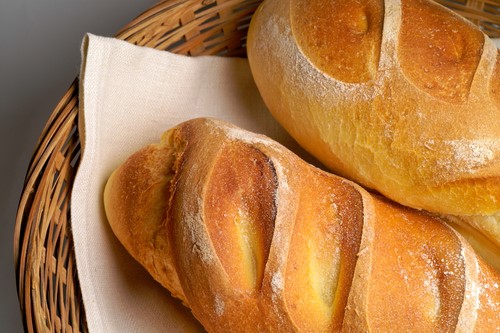
It is responsible for the savory flavor of roasted meats as well as the toasted flavor of baked breads to name a few.
During Maillard's reaction, sugar and amino acids combine to form hundreds of new and different flavor compounds. Each type of food has a very distinctive set of flavor compounds that are formed during the Maillard reaction. In fact, these same compounds have been used by flavor scientists to create artificial flavors.
One of the keys to great cooking is managing the Maillard reaction. The tricky thing about trying to achieve this reaction is how easy it is to burn food before it reaches this reaction. But one way to accelerate the Maillard reaction without burning food is to increase the PH by adding baking soda. This is THE ingredient that increases browning without burning. Take browning onions, for instance. Adding a pinch of baking soda accelerates the browning process, without burning the onions, and their flavor is greatly enhanced in the process.
Here's video from www.healthyicrecipes.com, that allows you to see, right before your eyes, how quickly the addition of baking soda speeds up the browning process of chopped onions.
Not only is there a visible difference, but the taste is different too. According to the chefs who performed this experiment, the onions cooked with the pinch of baking soda tasted much sweeter and had stronger caramel overtones.
And speaking of this business of caramel overtones, let's talk about carmelization, that flavor factor related to the Maillard reaction. Caramelization is a culinary phenomenon that occurs when carbohydrates such as sugar, or proteins found in meat, are heated to temperatures of 300°F or higher, causing them to turn brown.
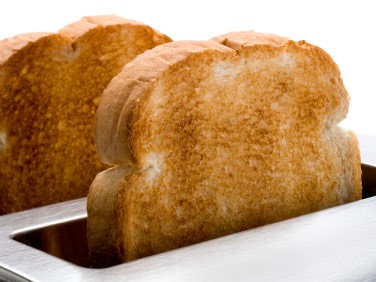
Caramelization is the principle that makes toast look toasty and turns pale white potatoes into crispy, golden-brown French fries. And it's a common step when cooking onions to be used in soups, stews, gratins, gravies, pizza, casseroles, etc. In fact, let's talk more about caramelizing onions:
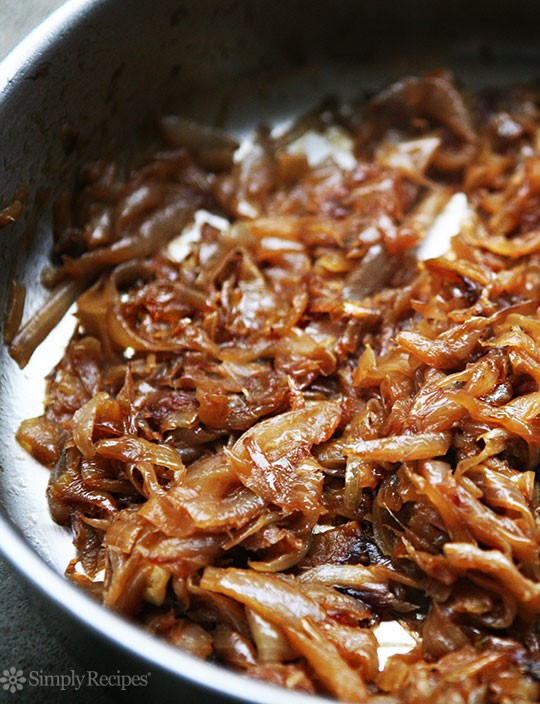
Caramelizing onions, by slowly cooking them in a little olive oil and a dash of baking soda until they are richly browned, is a wonderful way to pull flavor out of the simplest of ingredients. Onions are naturally sweet; and as caramel comes from the simple cooking of sugar, when you slowly cook onions over an extended period of time, the natural sugars in the onions caramelize, making the result intensely and wonderfully flavorful. This is a cooking technique well worth the effort it takes to master. Here's how the pros do it:
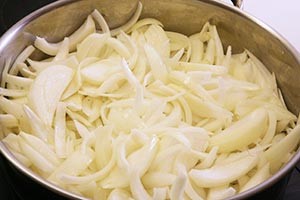
In a wide, thick-bottomed sauté pan, melt about 1 tablespoon of extra virgin olive oil or butter. Heat the pan on medium high heat until the oil is shimmering. Add the onion slices and stir to coat the onions with the oil. Spread the onions out evenly over the pan and let cook, stirring occasionally. Depending on how strong your stovetop burner is you may need to reduce the heat to medium or medium low to prevent the onions from drying out. After 2 or 3 minutes, sprinkle about ½ to 1 teaspoon baking soda over the onions, and if you want, you can add some sugar to help with the caramelization process.
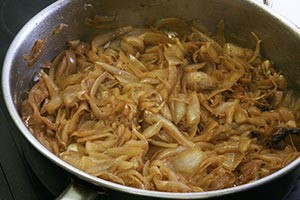
Let the onions cook for 30 minutes to an hour more, stirring every few minutes. As soon as the onions start sticking to the pan, let them stick a little and brown, but then stir them before they burn. The trick is to let them alone enough to brown. After the first 20 to 30 minutes you may want to lower the stove temperature a little, and add a little more oil. A metal spatula will help you scrape up the browned bits from the bottom of the pan as the caramelization proceeds.
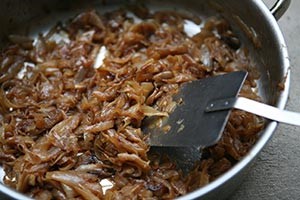
As the onions cook down, you may find you need to scrape the pan every minute, instead of every few minutes. Continue to cook and scrape, cook and scrape, until the onions are a rich, browned color. At the end of the cooking process you might want to add a little balsamic vinegar or wine to help deglaze the pan and bring some additional flavor to the onions. Finally, your caramelized onions can be refrigerated for several days in an air-tight container.
And now that you know about THE ingredient that increases browning without burning, caramelized onions can easily be a recipe mainstay!
- www.medmanor.com
- www.jameselsey.co.uk
- www.simplyrecipes.com
 Alice Osborne
Alice Osborne
Weekly Newsletter Contributor since 2006
Email the author! alice@dvo.com
